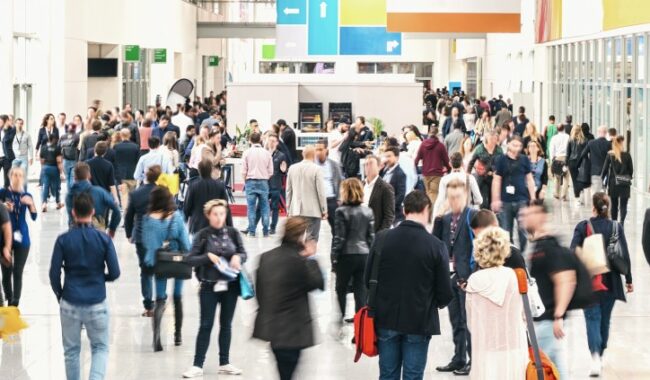One word on everybody’s lips these days is “metaverse,” or a 3D virtual reality/augmented reality universe where people could one day work, connect and shop. While it may sound like science fiction, tech giants around the world are working hard to make this digital frontier a reality. But before we actually throw on our VR headsets and specialized gloves (Ready Player One, anybody?), the metaverse is still in its early stages of development, and a lot more has to be done before it exists for everyone.
Until then, advances in VR and AR technology are being used in other captivating and creative ways across a variety of industries. Take, for example, The Weather Channel’s immersive mixed reality sets. The media outlet has been using them for the past several years to eye-poppingly illustrate everything from climate change to what it’s like to experience a tornado firsthand. Meanwhile, both the NBA and NFL have been experimenting with ways to offer fans a fully immersive experience that will put them inside the games.
More recently, the meetings and events industry has also begun embracing the potential of VR and AR technologies, largely due to the pandemic and the increase in virtual events. At The 180 Group, we’ve invested in developing innovative immersive environments to make our virtual events even more engaging, exciting and memorable for presenters and audiences alike. Through the power of green screens, custom hardware and unique software solutions, we can build computer-generated 3D environments any way we and our clients want. We’re able to configure the sets so they look and feel architecturally real, while also having multiple screens appear out of nowhere or huge set elements come out of the ground. The possibilities are virtually endless.
One of the biggest and most appealing benefits of using immersive environments is they infuse fresh energy into virtual events and transform them from boring webinars that feed our collective “Zoom fatigue” to intriguing experiences unlike any other. Through subtle virtual camera angle changes that add movement to the space to changing the setting completely every time a different presenter is introduced, immersive environments facilitate better audience engagement. From the second an audience member logs in, they’re drawn in. They immediately see it isn’t another Zoom or Teams meeting, and they praise these distinctive events afterward as being “well-produced,” “sharp,” and “fun.”
Plus, immersive sets can imbue just as much energy into the presenters and their presentations. Speakers are no longer stuck behind a screen at home or in an office during a virtual event. Instead, they’re in a studio with lights, green screens and a crew, which is more exciting and feels like they’re back in an in-person environment. The technology and software also equip presenters with the opportunity to interact with their slides and videos in a whole new way, while at the same time, giving them the advantage of using closer and easier-to-read teleprompters.
However, as the old adage goes, with great power comes great responsibility. While the only boundaries for what these immersive environments can look like and do are truly within our own imaginations, it’s imperative they’re thoughtfully and intentionally designed around a client’s goals and the event’s theme — not the other way around. At The 180 Group, we start by looking at the reason behind each event. We hone in on our client’s objectives, then we tap into the attendees and how we want them to feel. We treat our productions as singular worlds, and we find engrossing ways to keep them connected to the content, the message and each other. Immersive environments should bring a client’s goals and messages to life, not distract from them, nor should they be used for the sake of production only.
At the same time, immersive virtual sets should be built around real people, not avatars. Otherwise, they can easily go from brilliant to bizarre and can turn off an audience just as quickly as they can engage them. It’s the “uncanny valley” effect, or that uncomfortable, disturbed feeling people get when a digital character or robot closely appears to be human but isn’t. By mindfully creating realistic spaces around real people, we will enthrall virtual attendees and avoid repelling them.
Ultimately, immersive environments add a superior level of professionalism and polish to virtual events. In time, creating and executing events with immersive environments will become even more affordable and efficient, and as such, it’s likely more companies will opt to switch their in-person events to virtual events, just so they can have that degree of quality each and every time. While some may argue it’s nothing more than futuristic flash and splash, investing in these types of elevated events can be very valuable now and in the long run, especially when everyone remembers the show’s content and how that particular meeting or conference looked and made them feel long after it’s over. And in reality, isn’t that what makes a genuinely great event?


